More growth from less nitrogen ... 7 suggestions to become less dependent on fertiliser.
Step 1 : Ensure a CORRECT Ca/Mg RATIO in the soil - Do a Kinsey Soil Analysis.
Many sandy soils score too low in Calcium when looking at relative occupancy on the clay-humus complex. A correct Ca/Mg ratio (often 68/12) ensures better utilisation of the N present, gives better soil life development, more air and better water balance.
A Kinsey soil analysis can clarify a lot: liming with what kind of lime? Is lime excess causing high weed pressure? How big is the sulphur deficit (protein!)? Are enough B, Re, Mn, Cu, Zn, Mo present for good photosynthesis and thus effective nitrogen conversion? Lime is bit cheaper than fertiliser these days.
The study below found up to 40% nitrogen savings for the worst plots.
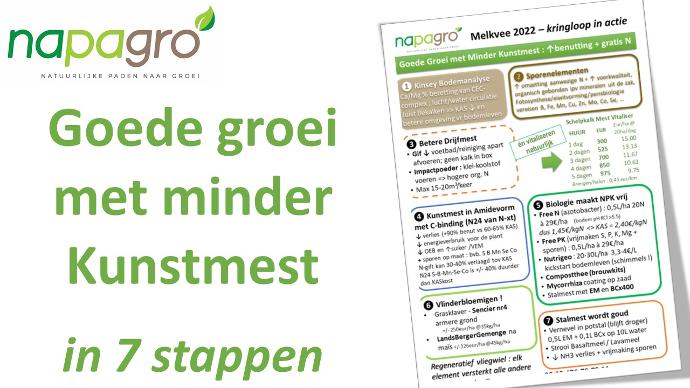
Step 2 : Supplement trace elements and/or make them more available to the plant.
The importance of SPORE ELEMENTS remains heavily underestimated. Soil life needs lots of spores, plant obviously and rumen/intestinal biology equally.
A Kinsey analysis gives insight into levels and interrelationships between spores. A foliar analysis shows what actually gets into the plant. Trace elements can be sprayed along with herbicides or as a separate foliar fertiliser. You can sprinkle basalt meal or lithotamnium. In case of blocking by e.g. too high P, spraying Free PK bacteria is a nice solution. Compost tea is also suitable for this. We are happy to find the solution that fits best.
Below, a grass field after spraying with copper and molybdenum, supplemented with amino acids. Deficiencies determined by foliar analysis.

Step 3 : Improve your driving efficiency
no poison in the well (rinse water, footbath, antibiotic milk, ...)
no lime in the boxes (high pH gives more emission losses), stone meal is OK though
Releases up to 20m³ in 1 go
Those feeding ImpactPowder (carbon/clay) to cows see a higher % of organically bound N in manure, so less loss
vitalise slurry for better uptake
Arable farmers who want to know if a load of slurry is OK? Check pH, the lower the better
The picture shows + 8tonne potatoes in the Unispread strip vs the injector strip, quasie on the line. Unispread strip was ploughed same afternoon, the injector strip after 5 days ... there are 2 effects at play, to think about.
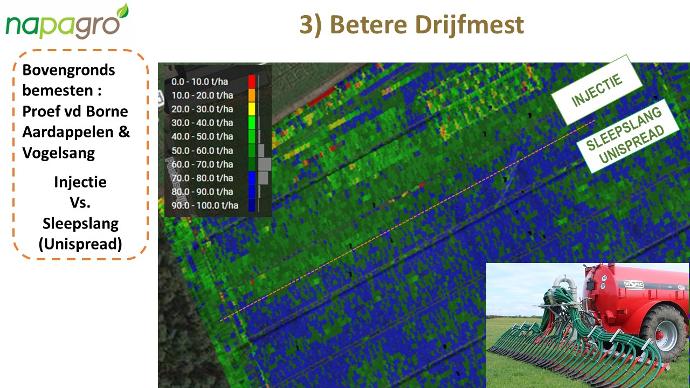
Step 4 : Use the BEST ARTificial FERTILISERS
Phasing out fertiliser is part of the regenerative path. We prefer to do that with the best kind. N-xt's liquid N24 amide fertiliser is bound to a carbon element : less leaching, less aggressive to soil life, less acidifying.
We see better protein quality in the crop.
Rete expensive that is ... but the N-gift can then also considerably omit KAS. And a lot of spores can be supplemented.

Step 5 : Biology releases NPK
Azotobacteria easily extract 20N from the air (correct liming first, this animal does not like acidic soil) Free N costs 1.45 eur/kgN while KAS = 2.4/kgN
The FreePK batery releases a host of minerals
rigeo is the overall soil life booster, just look at the underbrush test and corresponding increased yield in maize
Seed coating makes mycorrhiza application economically attractive
Compost tea provides broad biology complement
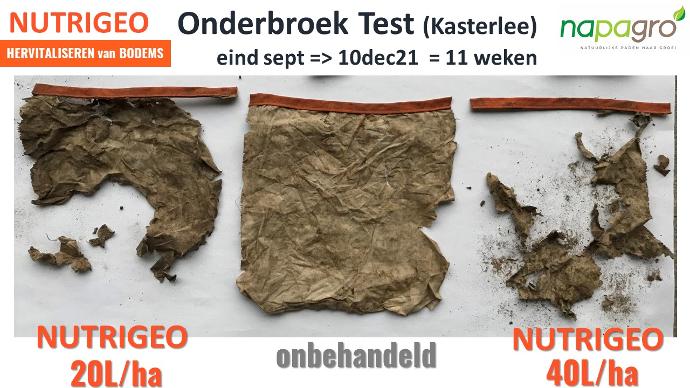
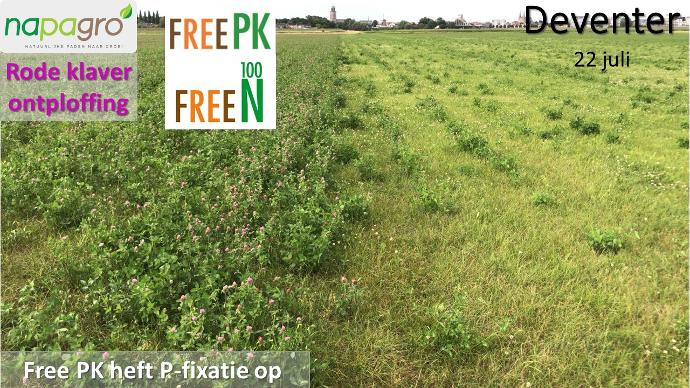
Step 6 : FLUFFING even in maize/corn rotation
Besides free nitrogen, leguminous plants provide broader biology and the release of trace elements. A LandsbergerGemenge still fits just after maize and gives a nice 1st cut if lightly fertilised with 15m³ slurry in early March. This also solves the overfertilisation just before maize. Getting 21t dry matter from a Postel sandpit, not bad right?
Here are the results of a Thorough Farming with Maize trial : the split manure application simply does better and winning a cut does not give less maize. The Nutrigeo plots score slightly better in terms of spores and digestibility.
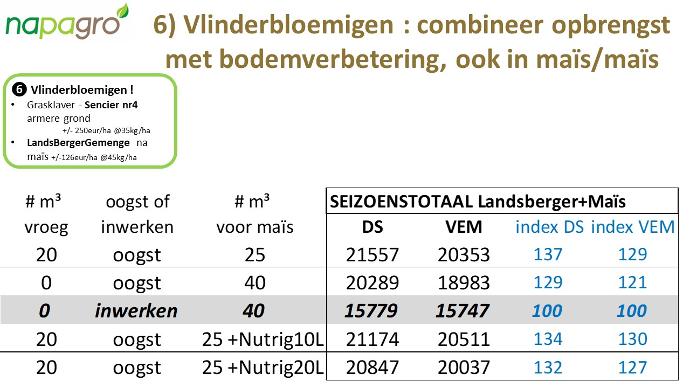
Also, pictures of Sencier nr4 grass clover which does well on poorer soils. Sample plots of Sencier nr4 grass clover (13 varieties) on display nearby from 1, 2, 3, 4 years old. Spread 25 - 30N for first cut and the rest slurry.
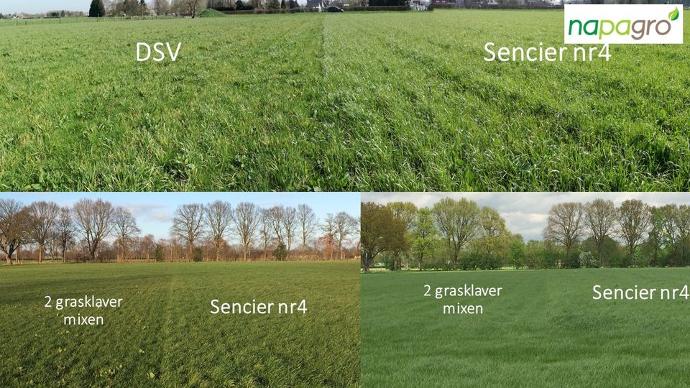
STEP 7 : turn STALMEST into real GOLD
The most valuable manure deserves only the best.
Spray Microferm 5 (EM) with BCx (nourishing algae extract) in the potting shed for better digestion
Sprinkle stone meal so that Biology can pry off the trace elements as early as possible.